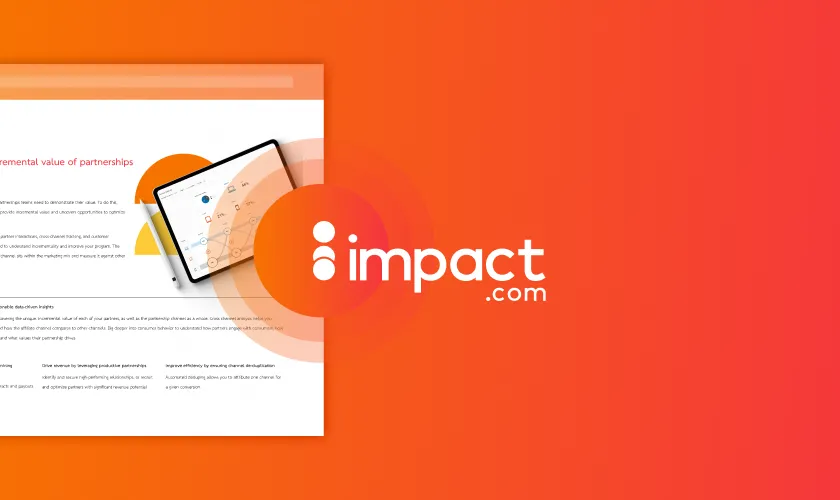As consumers grow increasingly skeptical of traditional advertising, with ROI plummeting by up to 41 percent annually, businesses face a critical crossroads. Partnership marketing emerges as a compelling alternative, offering a fresh approach to audience engagement and revenue generation.
Picture this: creators amplify your brand message, publishers, and affiliates who genuinely connect with your values. These strategic alliances transcend mere promotion, fostering authentic recommendations that resonate with target audiences. From e-commerce startups to established SaaS companies, businesses across sectors rely on partnerships to navigate budget constraints and cultivate lasting consumer trust.
Are you curious about how this strategy could reshape your marketing playbook? Explore the 10 transformative benefits of partnership marketing that are redefining business growth in an era of advertising fatigue.
10 reasons to say yes to partnership marketing
Many brands already leverage the benefits of partnership marketing to open new growth avenues and achieve remarkable success.
- Skyscanner enjoyed 77 percent more bookings.
- Rugs Direct grew revenue by 600 percent year-over-year (YoY)
- Flower Chimp saw a 55 percent new customer acquisition growth
- SafeOpt achieved a 1,375 percent return on investment
You can also elevate your business strategy by tapping into the power of partnership marketing. And if you need more persuasion, here are 10 reasons why.
1. Achieve cost-effectiveness: Pay only for results
One of the most compelling benefits of partnership marketing is its cost-effectiveness. Unlike traditional advertising, where businesses pay regardless of outcomes, partnership marketing operates on a pay-for-performance model.
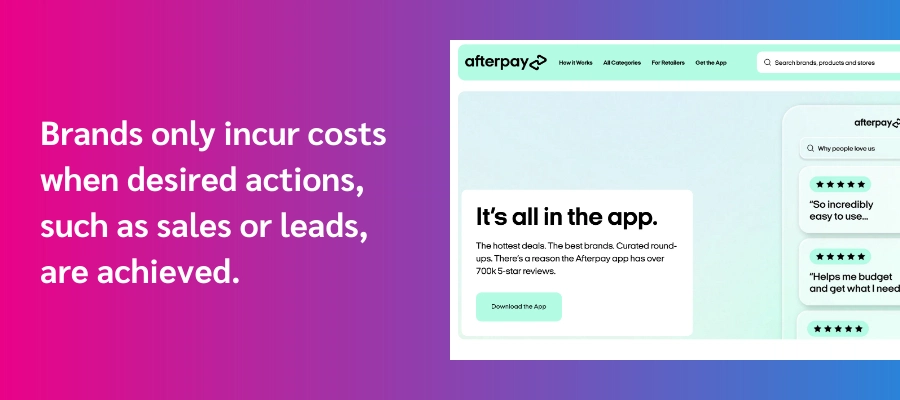
Source: Loyalty and rewards partner, Afterpay
This approach minimizes financial risk, making it a budget-friendly option for businesses of all sizes. It aligns marketing spending with actual results, ensuring that resources are allocated efficiently. Brands can adjust commission rates based on performance, allowing for a dynamic approach to budgeting.
2. Drive success: Offer performance-driven rewards
The channel’s model encourages partners to perform at their best since their earnings depend on the sales or leads they generate.

Source: Semrush affiliate program
Rewards like these motivate partners to optimize strategies and engage their audience to achieve higher conversions. This dynamic creates a win-win scenario where the brand and the partner are rewarded for their efforts.
3. Boost brand visibility: Leverage diverse partner types
Instead of relying solely on traditional channels—such as search engine advertising or social media marketing—brands can tap into the unique reach of different partner types. These partner types can include review and comparison sites, content publishers, social media influencers, and mobile partners.
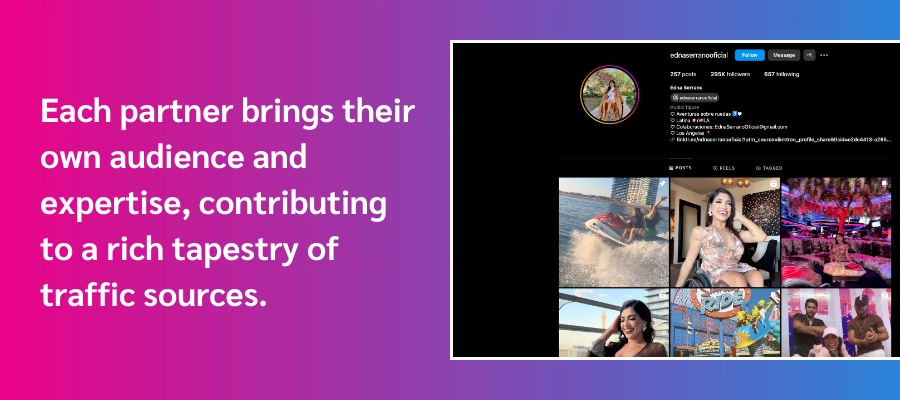
Source: Creator Edna Serrano
Partners tailor their messaging to resonate with their specific audience—whether it’s through a link in a publisher’s blog posts, mention in a creator’s podcast, or feature in an influencer’s Instagram story. This personalized approach enhances engagement and drives quality traffic.
4. Build trust: Gain credibility with reputable endorsements
Trust and credibility are invaluable assets for any brand. Partnership marketing can significantly enhance a brand’s reputation by leveraging the credibility of trusted partners. When a partner vouches for a brand, their followers are more likely to have confidence in its offerings.
Partners often have established relationships with their audience, which leads to higher trust. This trust is transferred to the brand when the partner endorses its products or services.
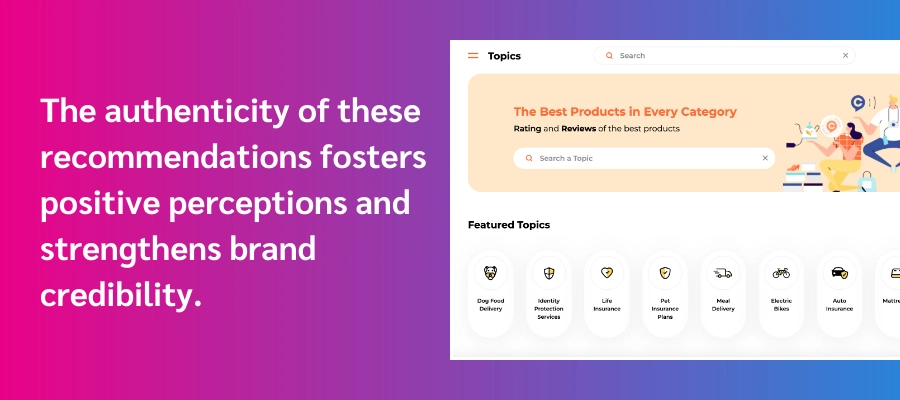
Source: Review site consumervoice.org
5. Expand brand reach: Attract new audiences
By collaborating with different partners, brands can reach new audiences who may not have been exposed to their products. This heightened visibility contributes to brand recognition and recall.
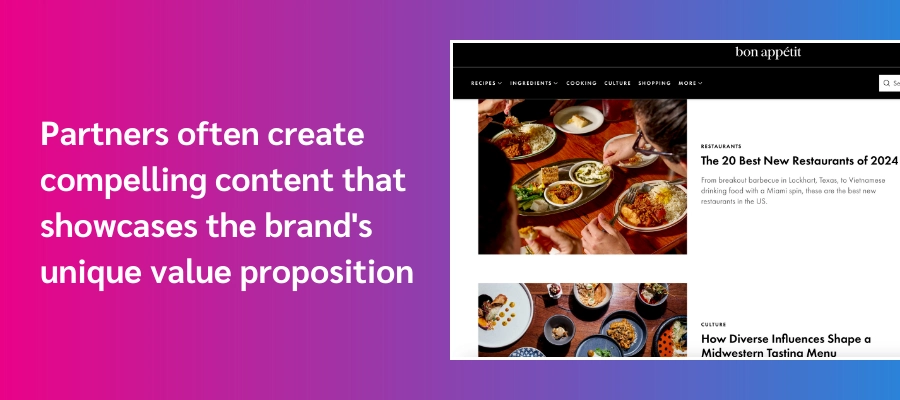
Source: Content partner Bon Appetit
From engaging blog posts to captivating videos, these creative assets capture their audience’s attention. This exposure generates interest and positions the brand as a thought leader.
Brand awareness built through partnership marketing has a ripple effect. It leads to word-of-mouth referrals and organic sharing among consumers. This organic growth amplifies the brand’s reach and reinforces its presence in the market.
6. Optimize marketing strategies: Use data-driven insights
Brands can leverage the wealth of data generated through partnerships to gain valuable insights into consumer behavior and preferences. This data-driven tactic informs future strategies and enhances decision-making.
By analyzing conversion rates, customer demographics, and purchasing patterns, brands can identify trends and opportunities. These insights enable brands to tailor their messaging and offerings to meet consumer needs, resulting in more targeted and effective marketing campaigns.
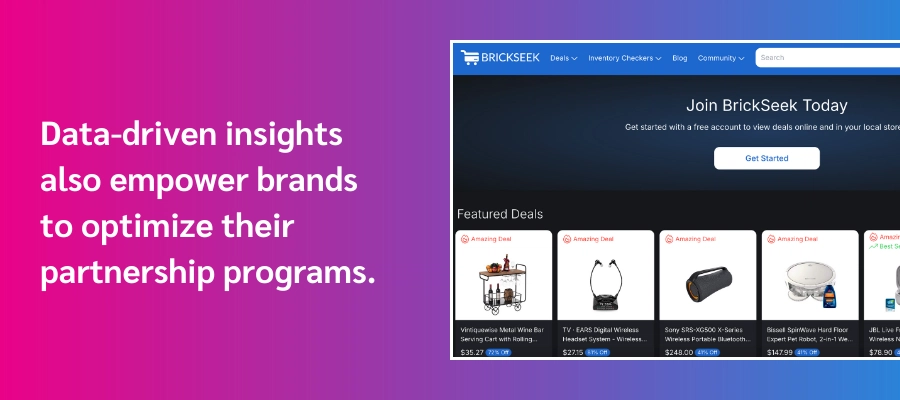
Source: Deal and coupon site BrickSeek
By identifying high-performing partners and channels, brands can strategically allocate resources for maximum impact. This iterative process ensures that marketing efforts remain aligned with business goals.
7. Expand markets: Enter new regions effortlessly
Partnership marketing provides brands with an efficient pathway to global market expansion. By collaborating with partners in different countries, brands can tap into diverse audiences without the complexities of traditional market entry strategies. This global reach opens up new growth opportunities.
Cultural nuances and language barriers are often challenging. However, partners possess local knowledge and insights that help brands tailor their messaging to resonate with specific markets.
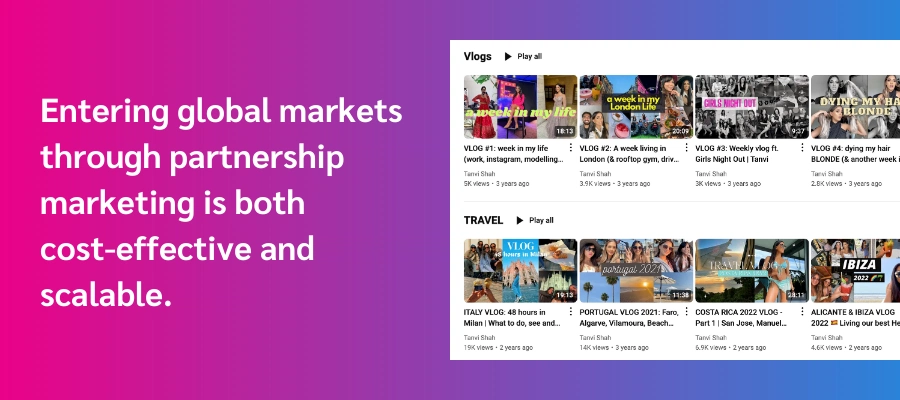
Source: UK-based creator Tanvi Shah
Brands can test the waters in multiple regions and refine their strategies based on performance. This flexibility ensures that expansion efforts are data-driven and adaptable to changing market dynamics.
8. Gain customer insights: Understand your audience better
Brands get a direct line to valuable customer insights with partnership marketing. Through partner interactions and feedback, brands gain a deeper understanding of their customers’ needs, preferences, and pain points.
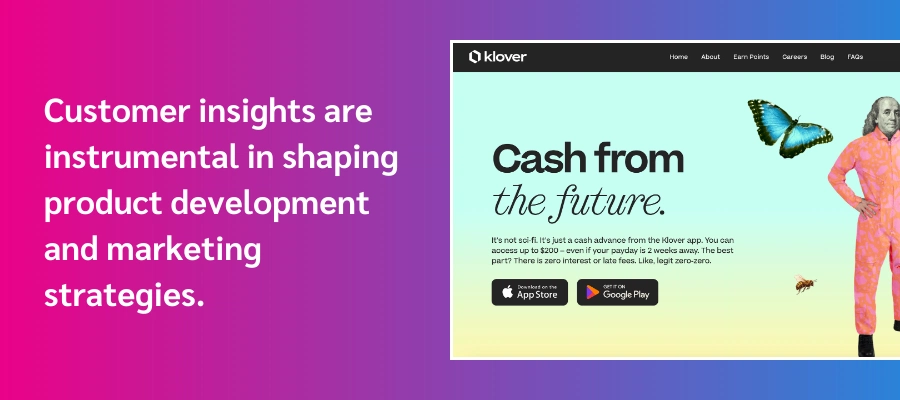
Source: Technology solution partner Klover
By analyzing these insights, brands can identify areas for improvement and innovation, ensuring that offerings remain relevant and aligned with consumer expectations.
Access to customer insights also informs branding and positioning strategies. Brands can refine their messaging and value propositions based on real-world feedback. This iterative process strengthens brand resonance and fosters long-term customer relationships.
9. Strengthen loyalty: Foster long-term customer retention
Customer retention is an advantage of partnership marketing, resulting from the deep-rooted relationships brands can build with their audience through trusted partners.
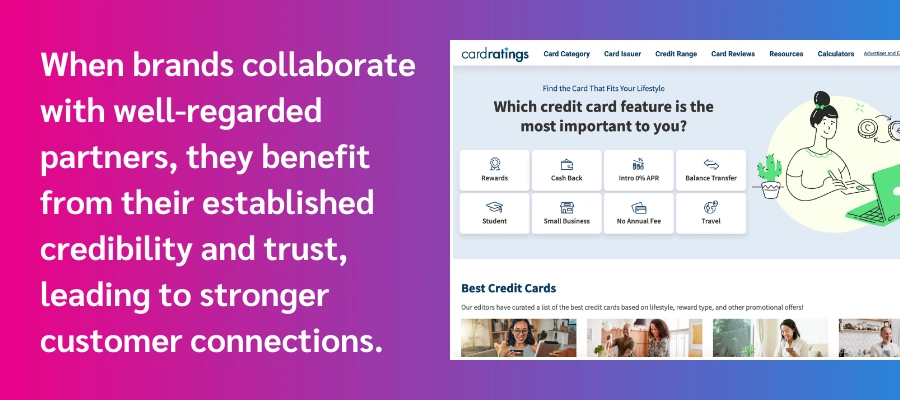
Source: Comparison site CardRatings.com
This sense of trust enhances the likelihood of repeat business, as customers are more inclined to remain loyal to brands recommended by individuals they already admire or follow.
Partners are adept at engaging with consumers through personalized interactions, ensuring that messaging resonates and encourages sustained interest. This ongoing engagement fosters a sense of customer community and belonging, pivotal for retention.
10. Catalyze growth: Adapt to evolving market needs
Unlike traditional marketing methods, partnership marketing enables brands to rapidly expand their audience through strategic alliances. The key advantage lies in its ability to grow alongside the business. As brands form new partnerships or deepen existing ones, they can effortlessly extend their presence across varied markets.
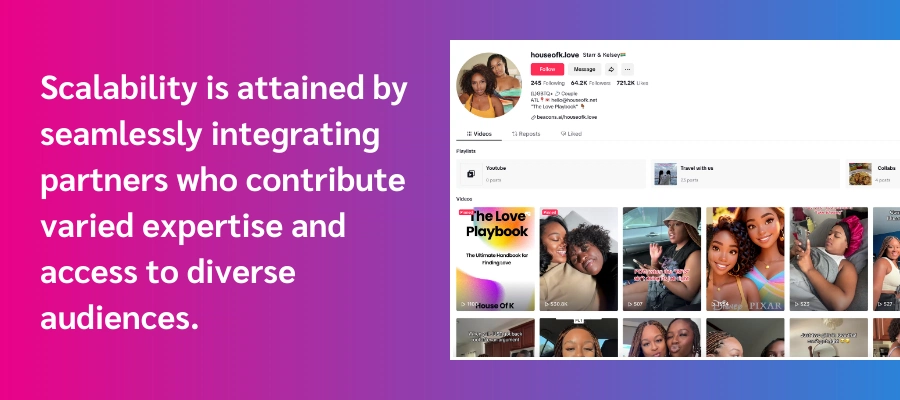
Source: Creators Starr and Kelsey
This ability to leverage partner strengths allows brands to adapt to changing market conditions and consumer preferences. As businesses evolve, partnership marketing campaigns can shift in focus, allowing brands to pivot or expand their strategies without incurring substantial overheads.
FAQ
Partnership marketing is a strategy where businesses collaborate with partners such as influencers, publishers, or affiliates to promote their products or services. These partners help drive traffic and sales by supporting the brand, and in return, they earn rewards based on their performance.
Partnership marketing offers several benefits, including cost-effectiveness, since you only pay for actual results. It enhances brand visibility and credibility through trusted partners and provides valuable consumer insights, helping tailor marketing strategies to better meet customer needs.
Yes, partnership marketing is adaptable and scalable, making it suitable for businesses of any size. Whether you’re a small startup or a large corporation, you can leverage this strategy to expand your reach, optimize marketing spend, and foster growth by collaborating with relevant partners.
Add partnership marketing to the mix for sustained growth
Partnership marketing is a strategic powerhouse, offering unmatched growth potential. By collaborating with diverse partners, brands unlock new avenues of reach and credibility, transforming their market presence. This performance-based model ensures cost-effectiveness by aligning expenses with actual results and empowers brands with rich insights into consumer behavior, fueling smarter strategies.
Beyond immediate gains, this channel cultivates long-term customer loyalty and retention, solidifying a brand’s position in the market. Embrace partnership marketing as your growth catalyst, and witness your business flourish with newfound agility and impact.
Contact grow@impact.com today and enjoy the tangible benefits that partnership marketing can offer your brand.
Check out these additional impact.com resources for more information on partnership marketing:
- The ultimate guide to partnership marketing [ebook]
- 5 powerful steps to build winner partnerships [infographic]
- A partnership manager’s guide to surviving economic downturns and uncertainty [ebook]
- Planning the next steps for your partnerships program [worksheet]
- How to succeed in partnership marketing: A recipe for success [ebook]



